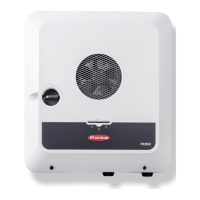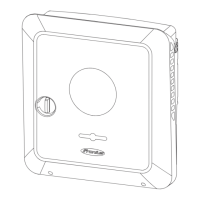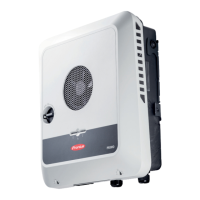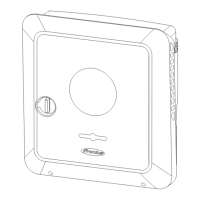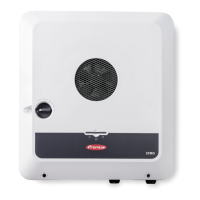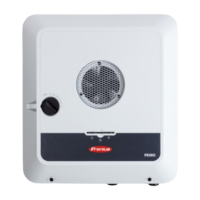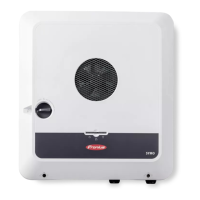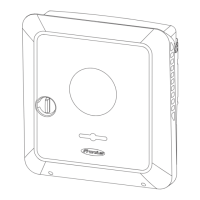Energy management
Energy manage-
ment
Self-consumption optimisation
The inverter always adjusts to the set target value on the Smart Meter. In the "automatic"
operating mode (factory setting), an adjustment is made to 0 W at the feed-in point (max-
imum self-consumption).
The target value also applies if a further source feeds into this Smart Meter. However, in
this case:
- The Fronius Smart Meter must be installed at the feed-in point
- Battery charging must be activated by another producer
The self-consumption optimisation has lower priority than the battery control specifica-
tions.
Self-consumption optimization
Switch self-consumption optimization to automatic or manual.
Target value on Smart Meter
If a manual selection is made under self-consumption optimisation, the target value on
the Smart Meter and the reference/feed-in can be selected here.
External producers(only possible with active battery)
If further decentralised producers are installed in the house, and these are incorporated
into the self-consumption regulation of the Fronius Hybrid inverter, this setting must be
activated. This means that energy can be drawn from the household network and fed
into the battery via the Fronius GEN24 Plus inverter. You can restrict how much power is
consumed by the Fronius GEN24 Plus inverter by specifying the maximum AC power
(AC max.). A maximum power consumption of the AC nominal capacity of the Fronius
GEN24 Plus inverter is possible.
PV power reduc-
tion
The battery control specifications make the generated energy as optimally usable as
possible. Situations may arise, however, in which PV energy cannot be used in full due
to battery control specifications.
Example
Fronius inverter 6000 W (max. output power)
BYD Battery-Box Premium HVS / HVM
defined discharge 6000 W
PV power 1000 W
In this case, the inverter would have to reduce the PV power to 0 W, since the output
power of the inverter is max. 6000 W and the device is already being used to capacity by
the discharging.
Since it doesn't make sense to waste PV power, the power limit is automatically adjusted
in the battery control specifications such that no PV power is wasted. In the example
above, this means that the battery is discharged only at 5000 W, so that the 1000 W PV
power can be used.
Load manage-
ment
Priorities
If additional components (e.g. battery, Ohmpilot) are present in the system, the priorities
97
EN
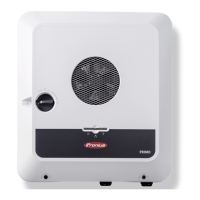
